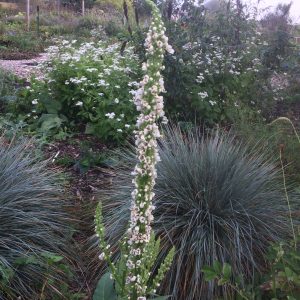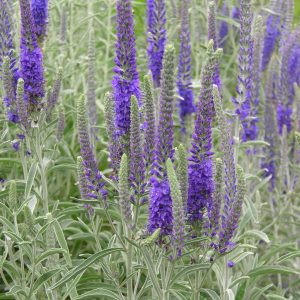Archives
Showing 193–199 of 199 results
-
Vaccinium vitis-idaea Lingonberry, Mountain cranberry, Cowberry, Foxberry Z 2-7
Evergreen foliage on this shrub, In spring down facing, pink urn-shaped flowers bloom. Then in late summer bright red berries appear and persist into winter. Spreads to form colony.
ARCHIVED
Note: This is a plant not currently for sale. This is an archive page preserved for informational use.
Evergreen foliage on this shrub, In spring down facing, pink urn-shaped flowers bloom. Then in late summer bright red berries appear and persist into winter. Spreads to form colony.
Size: 6-12” x 3’ spreading
Care: sun to part shade in moist, very acidic soil
Native: Boreal forest and Arctic tundra in Northern Hemisphere from Eurasia to North America, Wisconsin native.
Size: Often made into jam, juice, syrup and relish. The berries contain high amounts of vitamin C, A and B1, B2, B3, as well as phytochemicals and omega-3 fatty acids. Historically used in folk medicine as an astringent, antihemorrhagic, anti-debilitive, depurative, antiseptic, diuretic, tonic for the nervous system, as well as treatment for breast cancer, diabetes, rheumatism, infections, gastrointestinal tract, kidneys, urinary tract ailments and fever.In 1745 Russian Empress Elizabeth ordered lingonberry planted all over grounds at Peterhof Palace in St. Petersburg. The common name Lingonberry comes from the Norse word for heather, lyngr. Vitis- idaea comes from vitis which is Latin for vine and idaea meaning “from Mount Ida.” According to L.H. Bailey, “Throughout the whole of N. Canada, hunters and trappers, as well as the native Indians, frequently depend on it for food. It is valuable for the shrubbery border, where the strong contrast of the dark green foliage and the bright colored persistent fruit is very striking.”
-
Verbascum chaixii Nettleleaved mullein Z 5-8
Spikes covered in white flowers with pink eyes from mid to late summer
ARCHIVED
Note: This is a plant not currently for sale. This is an archive page preserved for informational use.
Spikes covered in white flowers with pink eyes from mid to late summer
Size: 36” x 18”
Care: Full sun in well drained, poor soil
Native: EuropeVerbascum was named by the Roman Pliny who said they attracted moths, calling them Moth mulleins. Described by Parkinson in 1629: “a stalk, the flowers hereof are pure white with the like purple threads in the middle.”
-
Veronica allionii Alpine speedwell Z 2-9
Purple-blue spikes bloom from early to late summer
ARCHIVED
Note: This is a plant not currently for sale. This is an archive page preserved for informational use.
Purple-blue spikes bloom from early to late summer
Size: 4-6” x 8-12”
Care: sun, moist well-drained to well-drained soil
Native: AlpsDescribed in 1779 in Prosp. Hist. Pl. Dauphiné
-
Veronica incana syn. V. spicata subsp. incana Silver speedwell, Hoary Veronica Z 4-9
Erect blue racemes June – September atop gray foliage give a serene effect
ARCHIVED
Note: This is a plant not currently for sale. This is an archive page preserved for informational use.
Erect blue racemes June – September atop gray foliage give a serene effect
Size: 12-18” x 12”
Care: sun to part shade in well-drained to moist well-drained soil
Native: mountains & fields of UkraineIntroduced from Russia by 1759. LH Bailey declared it “has a good appearance both in and out of bloom; useful in the rockery, border or geometrical garden.” (1933)
-
Veronica oltensis Turkish-leaf speedwell, Thyme-leaf speedwell Z 4-9
Tiny azure flowers smother the ground in spring-early summer on this groundcover or rock garden plant, or grow in walkway crevices.
ARCHIVED
Note: This is a plant not currently for sale. This is an archive page preserved for informational use.
Tiny azure flowers smother the ground in spring-early summer on this groundcover or rock garden plant, or grow in walkway crevices.
Size: 1" x 24" slow spreader
Care: sun to part shade in well-drained soil
Native: Mountain valleys of Oltu and Coruh inTurkey.Described in literature in 1914.
-
Viola corsica Corsican violet Z 4-8
Rare species violet. Clouds of blue violets with veined heart leading to tiny yellow centers
ARCHIVED
Note: This is a plant not currently for sale. This is an archive page preserved for informational use.
Rare species violet. Clouds of blue violets with veined heart leading to tiny yellow centers from late spring thru fall-blooms its head off. Reliably perennial. More heat tolerant than pansies.
Size: 5-7” x 8-10”
Care: sun to part shade in moist well-drained soil.
Native: Corsica1st described by Swedish botanist Carl Fredrik Nyman before 1893.
-
Zinnia grandiflora Rocky Mountain Zinnia SUBSHRUB Z. 4-9
Profuse golden yellow flowers from July through fall, slow to emerge in spring so don't prematurely assume it's gone.
ARCHIVED
Note: This is a plant not currently for sale. This is an archive page preserved for informational use.
Profuse golden yellow flowers from July through fall, slow to emerge in spring so don’t prematurely assume it’s gone. Very sweet yellow blooms over long period of time.
Size: 4-6”x 12-15”
Care: full sun in well-drained soil
Native: Colorado & Kansas south to SW U.S.The name Zinnia honors German botany professor Johann Gottfried Zinn (1727-1759). This species 1st collected by Edwin James, physician and botanist on the Long Expedition in 1820.





